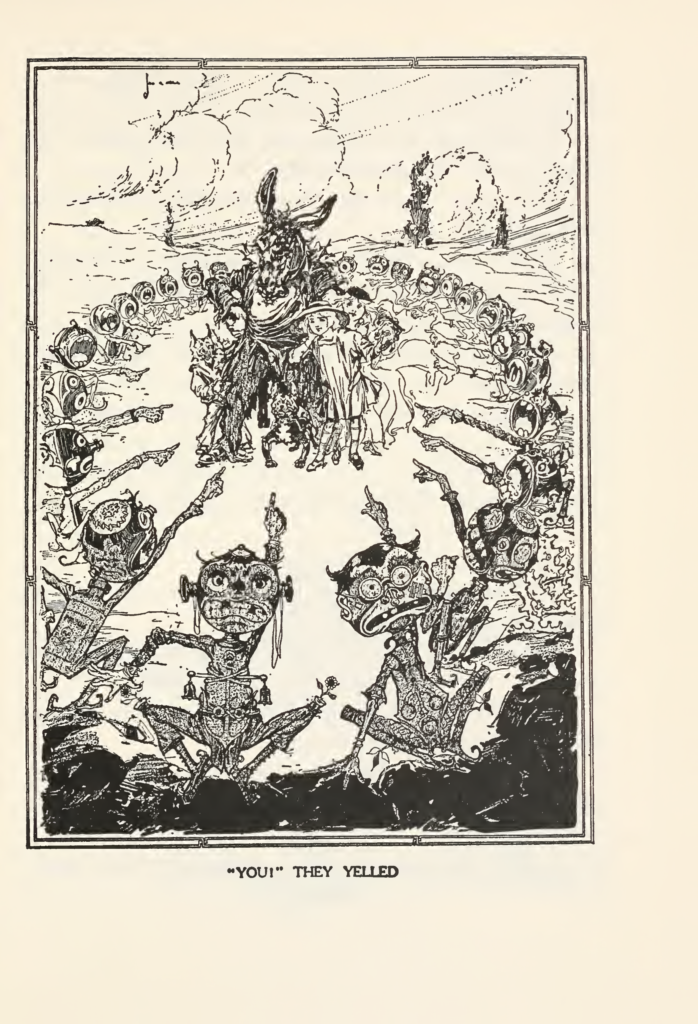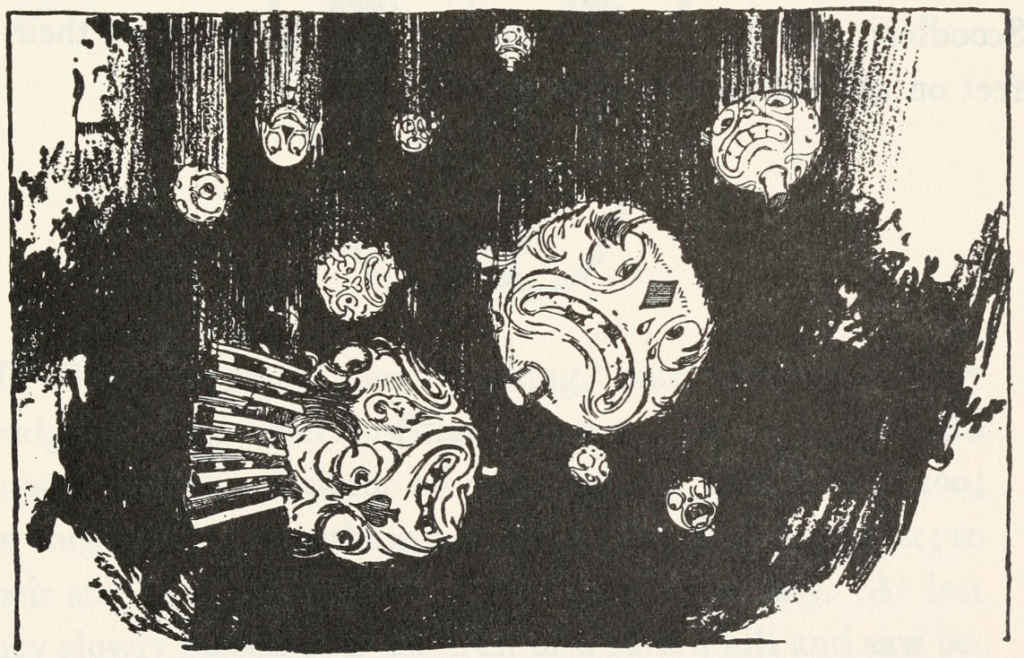They moved forward a little faster to see what the dog was barking at, and found perched upon a point of rock by the roadside a curious creature. It had the form of a man, middle-sized and rather slender and graceful; but as it sat silent and motionless upon the peak they could see that its face was black as ink, and it wore a black cloth costume made like a union suit and fitting tight to its skin. Its hands were black, too, and its toes curled down, like a bird’s. [Neill always draws the toes pointing up.] The creature was black all over except its hair, which was fine, and yellow, banged in front across the black forehead and cut close at the sides. The eyes, which were fixed steadily upon the barking dog, were small and sparkling and looked like the eyes of a weasel.
[…] The thing gave a jump and turned half around, sitting in the same place but with the other side of its body facing them. Instead of being black, it was now pure white, with a face like that of a clown in a circus and hair of a brilliant purple. The creature could bend either way, and its white toes had now curled the same way the black ones on the other side had done.
“It has a face both front and back,” whispered Dorothy, wonderingly; “only there’s no back at all, but two fronts” (105–106).

When the Scoodlers turn out to be hostile and swarm Dorothy and her friends, and then turn out to remove their two-faced heads and fling them as projectiles before their headless bodies rush to grab them again, the imagery is horrifying.

Look at the way the Queen Scoodler’s left arm wraps around her body. Also, is she made of wood? Baum describes the Scoodlers as having skin earlier. Is that boxy torso skin?
The Scoodlers, each smaller than Dorothy, live in small stone huts in a cave inside a mountain accessible only via a narrow stone bridge that spans a “deep gulf—so deep that when you looked into it there was nothing but blackness below” (114). The only desire of the Scoodlers to eat Dorothy and her friends in a soup, for which purpose they have cauldron and many onions, carrots, turnips, and potatoes. Dorothy and her friends break out of the Scoodlers’ prison. As they flee, the shaggy man puts his baseball skills to good use and daringly stands his ground on the narrow bridge to catch the Scoodlers’ heads and toss each into the black abyss.

Because the bodies depend on their heads for vision, the implications are disturbing, even as it is also comforting to know the Scoodlers will cause no further trouble. However, the Scoodlers are the only suggestion of the heavier violence and dark tone of Dorothy and the Wizard in Oz. I thought the Scoodlers returned in The Emerald City of Oz, but in fact I mixed them up with the Whimsies, who have similarly scary disproportionately large heads (or rather, despite appearances, the opposite—but I will explain that in the next post).
There might be some unfortunate subtext here. At the time, cannibals attacking people was a rather common element of racist caricature in stories of explorers and travelers in Africa and Pacific islands. Particularly given that context, Neill may draw some of their clown makeup worryingly similar to blackface. But Baum, at least, doesn’t seem to lean into these implications, so I will not ponder them long either.